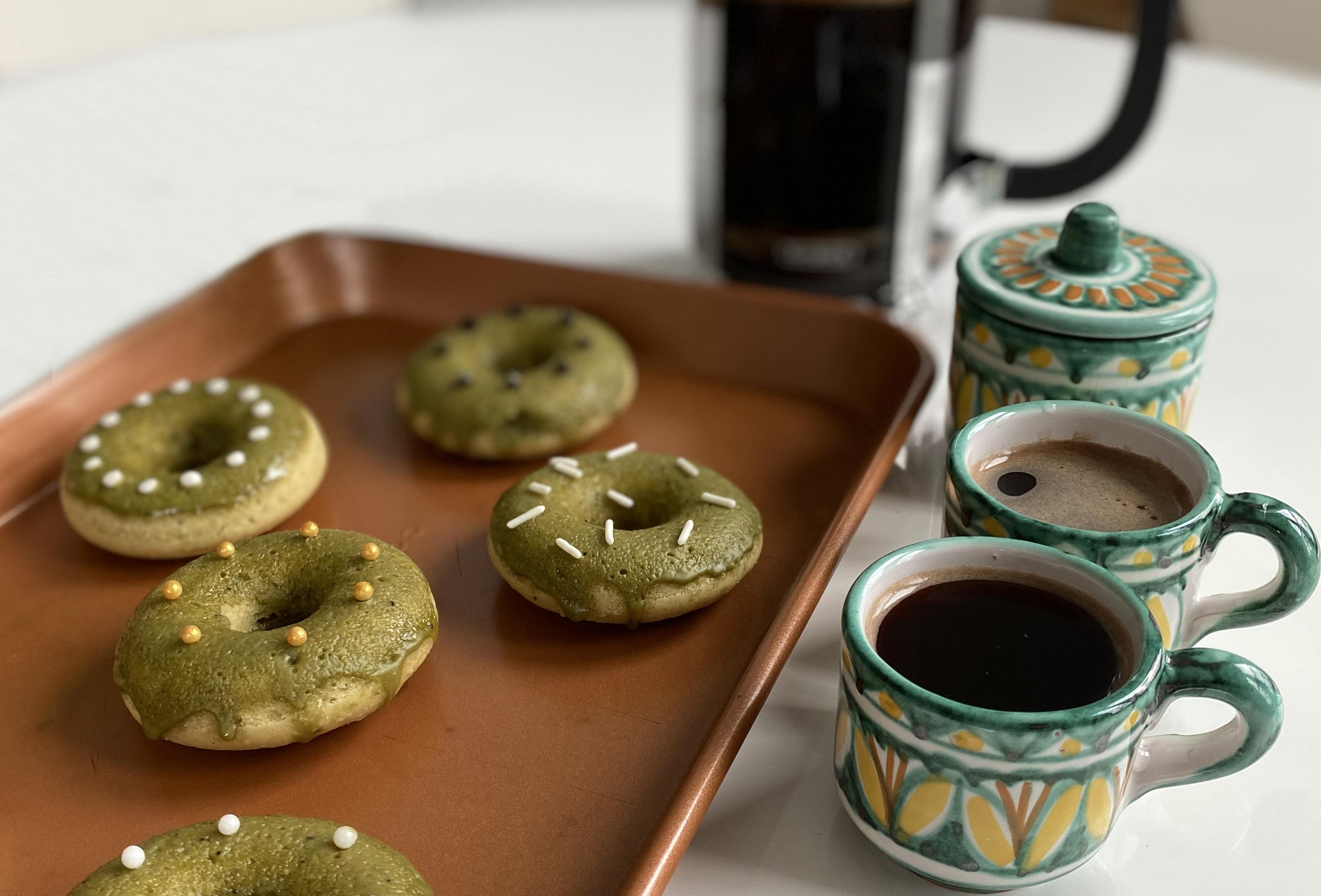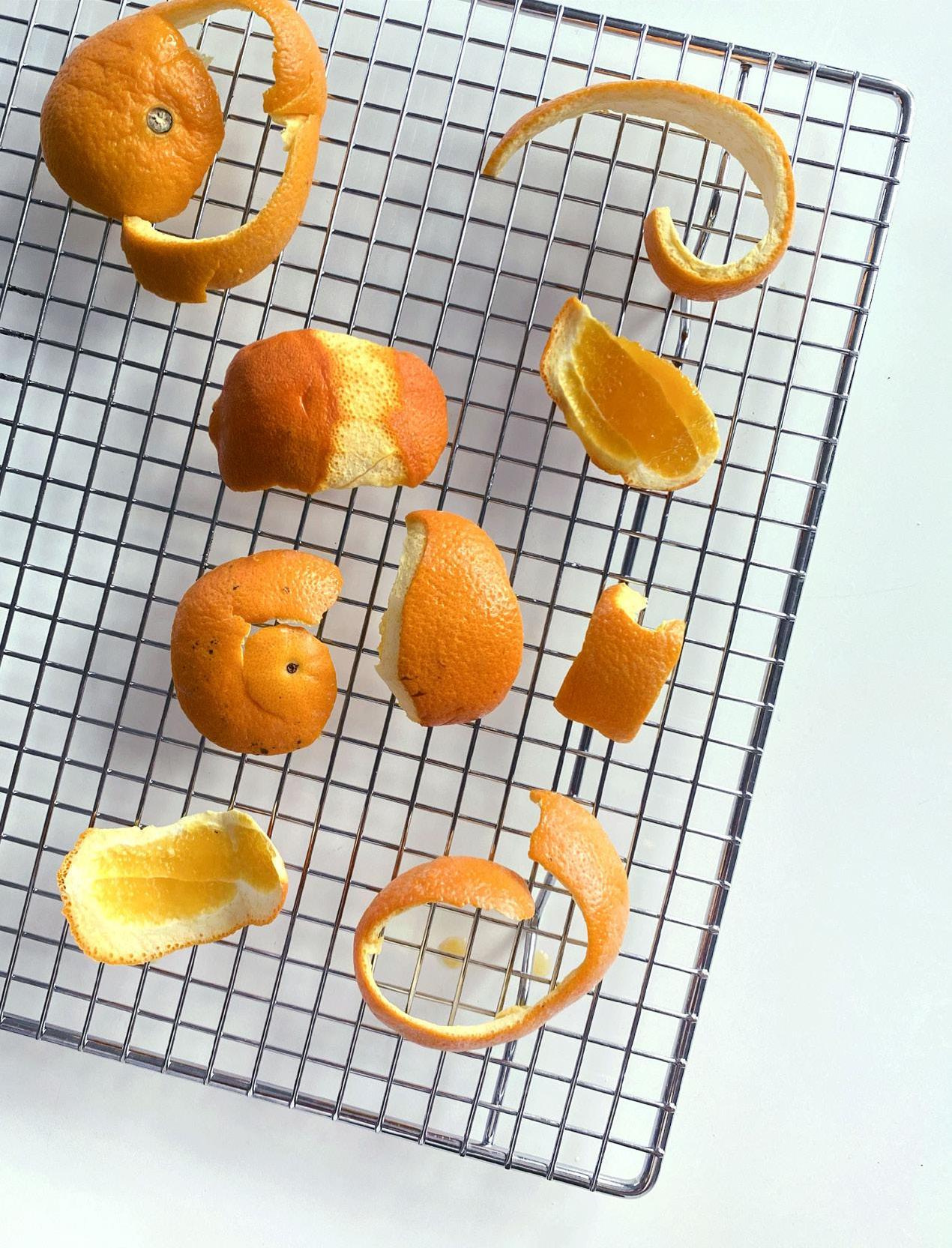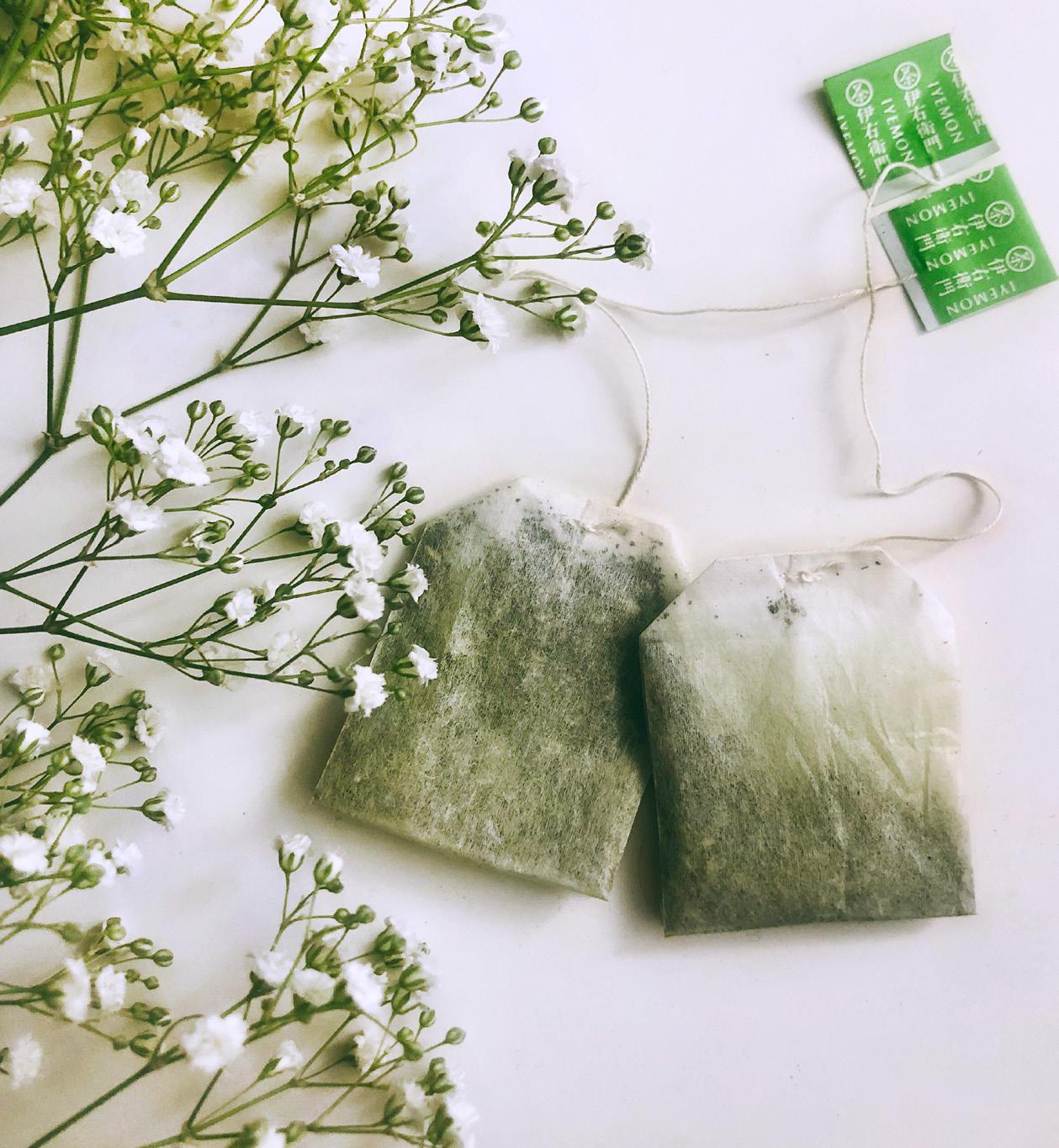
8 minute read
Sustainable Skincare
from Going Green
MATCHA MATCHA MADNESS! MADNESS!
by Stephanie Tan
Advertisement
The fifteen of us are sitting cross-legged in a cramped, yet cozy, dorm room around Christmastime. It’s finally my turn to open my presents, and I peel apart the red and green wrapping paper excitedly to reveal the one item I placed on my wish list that no one understood: a small container of authentic Japanese matcha powder.
For as long as I can remember, matcha has been one of my favorite ingredients. I firmly believe that, within reason, the subtle, earthy flavor that comes with its beautiful green color can make any dessert better. Sure, it might turn away the occasional picky eater or unsuspecting foreigner in Japan for the first time, but as a lover of all things new, I’ve loved each verdant matcha treat since the beginning.
The first time I remember trying anything matcha-related was probably over a decade ago, when I attended Chinese school every Saturday morning. There was a massive Chinese supermarket just down the road, and I distinctly remember walking side by side with my mom, through each and every aisle. And my favorite part? The bakery. Filled with countless variations of every pastry and pie imaginable, from egg tarts to croissants and everything in between, it was every little kid’s dream. Yet one thing remained constant in my order every time I ventured here: an icy matcha smoothie.
Each sip of my slushie would send an icy chill through my mouth, yet I never let a drop go to waste. From that point onwards, my cravings only grew; I soon found the recipe of my dreams one day while browsing Youtube. I would not sleep until I successfully made, re-made, perfected (and taste-tested) a slice of delicious, homemade matcha pound cake. It was all I could think about for the longest time. Unfortunately, it was four years after I discovered the recipe that I finally found the time to test it out and tweak it to perfection!
So, you can imagine my excitement when I unwrapped the delicate wrapping paper to unveil a fully packed canister full of sweet-smelling matcha powder this past December. I was determined more than anything to use it for one recipe and one recipe only. I waited until I returned home for winter break, with my matcha safely tucked away deep in my suitcase. As soon as I set my bags down, it took less than an hour to form the matcha loaf of my dreams. Four years of anticipation had led me to the moment I took the heavy, matcha-filled pan out of the oven.
I can honestly say that the matcha pound cake recipe I followed was one of the easiest, yet most frustrating recipes I’ve ever made; that meaning it was incredibly easy to whip up, but equally as difficult to resist eating all the batter before throwing it in the oven. When it was finally time to taste the cake, I couldn’t stop smiling; I’d never felt this proud of anything I baked.
It had been over four years since I first discovered the recipe, and if I learned anything from this endeavor, it’s that you can’t waste time in life putting off the things that you dream about doing (or eating). The cake was everything I had imagined and more, with a chewy, dense center and just the perfect amount of crunch in the crust. The matcha flavor was subtle yet noticeable, and the color was almost that of a peridot. Paired with a cup of coffee or black tea, it made for the perfect breakfast for an entire week. To this day, the same tiny tin can of beloved matcha powder sits in my cabinet waiting for the next big recipe to come along.
In case you ever want to try recreating this delicious loaf of matcha goodness, I followed the recipe by “Going My Wayz” online.
Enjoy!
PHOTO: ABBY REING

Sustainable Skincare
by Amber Leung
I remember visiting my great-grandmother in Taiwan and learning about the magic of orange peels. Growing up in the United States, I wasn’t too familiar with my relatives overseas, but my mother still made an effort to send me back each summer as a kid. Though I don’t remember much of what my great-grandmother and I talked about that day, I have a clear memory of her flawless skin that defied her 90 years of age. Taking her hands in mine, she explained how when she was in her 20s she began using orange peels as a way to keep her skin from spotting.
My mother carries this tradition to this day. Filled with Vitamin C, orange peels are great for toning the skin — it strips the skin of dead skin cells and dirt. It also has a chock full of antioxidants and calcium, which help prevent wrinkles and premature aging, as well as acne. The orange peel’s high concentration of citric acid can also lighten dark blotches. Research shows that orange peels are more nutritious than the fruit itself, so why waste those precious nutrients that can be used to nourish your skin?
ORANGE PEELS
If you walk into my house, it shouldn’t surprise you to see a bucket full of crushed egg shells by the kitchen sink, old coffee grounds in a jar by the plants, and used lemons wrapped in old newspapers in the refrigerator. Having a yoga enthusiast and a green thumb for a mother, sustainability is a word that is not only familiar but also prominent in my household. As my mother slowly ages, she openly turns to food as a way to keep her skin healthy. While diet is still incredibly important, she has found satisfaction in reapplying unneeded parts of food into her skincare routine. Below are some of the most essential green skincare products around my house.
Preparing orange peels is simple. My mother leaves them out to dry naturally on a paper sheet. After drying, the orange peels are safe to use on the skin and can be applied by scrubbing directly onto the face. If drying orange peels takes too much time, feel free to squeeze citrus oil out of the fresh peel and spread it on the targeted area. Orange peels are often overlooked, but in my family, it is a tried-and-true skincare gem that keeps the aging skin vibrant and young.
Being a lover of food, I decided to test out my amateur culinary skills one day and bake butter cookies. The recipe only called for egg yolks and as I was contemplating what to do with the leftover egg whites, my mother grabbed the bowl out of my hands. She added two teaspoons of sake and stuck the bowl into the refrigerator, without explaining a single thing. Two hours later, I realized my mother had made the egg whites into a mask when she walked into the living room with a sticky regiment spread all over her skin.
Egg whites have various benefits, one being its skin tightening property. With excessive amounts of protein, it works wonders in terms of healing the skin. Egg white masks are known for reducing pores and extracting unwanted gunk that is clogging the skin. It also absorbs oils that contribute to acne and spots. After using egg whites, the skin feels tight and smooth.
Though there are various egg white mask recipes that you can find, my mother invented her own recipe. Using all organic ingredients, she first separates the egg yolk from the egg whites by putting them in different bowls. Then she adds a little bit of sake —too much will dry out the skin — and squeezes a few drops of lemon. After whisking everything together, she sets the mask by letting it cool for a few hours before using it. The consistency is rather sticky and gooey, so it may feel strange on the skin at first; however, the benefits that come with the mask outweigh the texture. After leaving the mask on for 15 to 20 minutes, my mother washes off the egg whites, revealing silky and tight skin. Many properties of tea help with skin care. Tea is recognized as being anti-inflammatory and anti-aging. While almost all tea leaves have their own health benefits, green and black tea is especially favorable to the skin. Filled with caffeine and other antioxidants, tea leaves can not only fight acne but also keep the skin looking and feeling tender. It also makes a great toner as it clarifies and smooths the skin.
Tea is always a staple in East-Asian culture. However, the problem with tea is that after adding water again and again to the same tea bag, it becomes less and less concentrated, even after a few hours. Lately, my mother has been brewing tea to bring to her job and she came up with a sustainable way to reuse tea bags by assimilating them into her nightly skincare routine after work. When I walk into her room at night these days, I can find her laying on her bed with tea bags under her eyes or the leaves spread all over her face.
PHOTO: JULIE SELJEGARD
TEA BAGS
Various techniques can be used with tea bags, as they are extremely versatile, but since they’re already packaged and soaked in water beforehand, my mother likes to use them as is. For example, just removing the tea bag from hot water and setting them under your eyes will de-puff the undereye area as well as lighten dark circles. By opening the bag, you can use the tea leaves inside for a scrub, not only on your face but also your lips. . Though it is a relatively new addition to my mother’s sustainable skincare routine, it has now become a staple as tea leaves bring your skin that perfect glow.
Food isn’t solely destined to be consumed; next time you eat a fruit or vegetable or have a cup of coffee, think about what other functions it can generate other than waste. Rather than adding to the excess of the world, go green instead, and reuse everyday produce in a creative way. This way, not only are you helping yourself, but little by little, you’re helping sustain the environment we call home.











